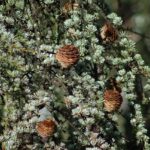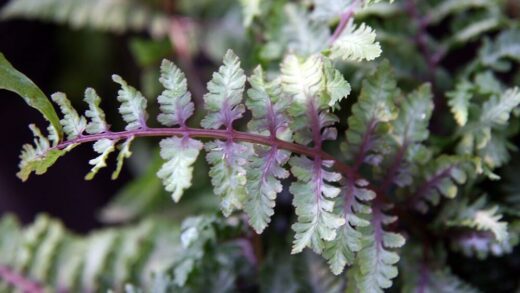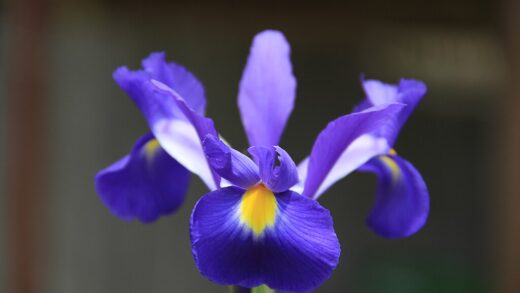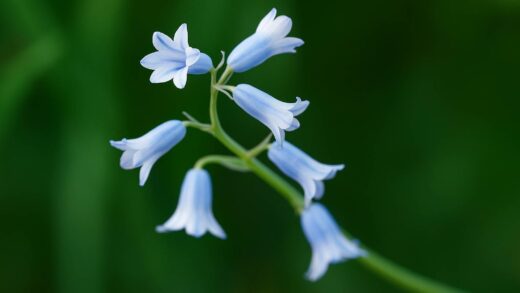Love-in-a-mist, with its delicate, fern-like foliage and intricate, jewel-toned flowers nestled within a lacy bract, is a cherished favorite in cottage gardens and informal plantings. This hardy annual brings an air of whimsy and timeless beauty, requiring surprisingly little intervention to thrive and put on a spectacular show from late spring through summer. Its charm extends beyond the fleeting beauty of its blooms; the fascinating, balloon-like seed pods that follow are equally ornamental, both in the garden and in dried floral arrangements. Understanding the fundamental needs of this plant is the first step toward cultivating a truly breathtaking display that will self-sow and return year after year, creating a sustainable and ever-evolving garden feature. True success with this plant lies not in intensive management, but in appreciating its natural life cycle and providing the simple conditions it prefers.
Cultivating a thriving patch of love-in-a-mist begins long before the first seed is sown, with the careful selection of an appropriate site. This plant is a sun-worshipper at heart, developing the strongest stems and the most prolific blooms when bathed in at least six to eight hours of direct sunlight each day. While it can tolerate a touch of light afternoon shade, particularly in hotter climates, insufficient light will invariably lead to leggy, weak growth and a disappointing floral display. The chosen location should also offer protection from strong, persistent winds, which can easily damage the delicate stems and feathery foliage, diminishing the plant’s overall ornamental value. Consider planting it alongside more robust companions that can offer a degree of shelter without casting excessive shade.
The foundation for healthy growth is, quite literally, the soil in which the plant is grown. Love-in-a-mist is not overly demanding, but it performs best in soil that is moderately fertile and, most importantly, exceptionally well-draining. Heavy clay soils that retain excessive moisture are the primary enemy, as they can lead to root rot and other fungal diseases, which this plant is susceptible to. Before planting, it is highly beneficial to amend the soil with organic matter such as compost or well-rotted manure to improve its structure and fertility. This simple preparatory step enhances drainage in heavy soils and improves water retention in sandy soils, creating the ideal balanced environment for the root system to establish quickly and effectively.
Once established, love-in-a-mist is remarkably self-sufficient, making it an excellent choice for low-maintenance garden designs. Its ongoing care requirements are minimal, primarily revolving around ensuring it has adequate moisture during its critical growth phases without becoming waterlogged. There is rarely a need for supplemental fertilization, as an overly rich soil can stimulate lush foliage growth at the expense of flowers. The plant’s natural, slightly wild growth habit is part of its charm, so it does not require staking or complex support systems unless planted in an unusually windy location. The primary task for the gardener is simply to observe and enjoy the plant’s progression from delicate seedling to flowering specimen and, finally, to the producer of its iconic seed pods.
Understanding the plant’s life cycle
Love-in-a-mist is a classic example of a hardy annual, meaning it completes its entire life cycle, from germination to seed production, within a single growing season. This ephemeral nature is key to its gardening strategy; it is not a plant that will return from its roots the following year. Instead, its continuation in the garden relies entirely on its prolific ability to produce and scatter seeds. This characteristic allows it to reappear, often in surprising and delightful new locations, creating a dynamic and naturalized feel over time. Gardeners who embrace this self-seeding tendency are rewarded with a low-effort, sustainable display that weaves itself into the fabric of the garden.
More articles on this topic
The journey begins in the cool soil of early spring or autumn when the seeds first germinate, sending up tender shoots of finely divided, almost feathery leaves. This initial foliage is distinctive and adds a soft texture to the garden bed long before any flowers appear. The plant grows relatively quickly in the lengthening days of spring, developing a central stem from which its intricate flowers will eventually emerge. This rapid growth phase is fueled by the stored energy within the seed and the nutrients available in the surrounding soil, highlighting the importance of proper soil preparation before planting for a robust start.
The flowering period is the pinnacle of the plant’s life, typically occurring in late spring and early summer. Each unique flower, available in shades of blue, white, pink, and purple, is subtended by a “mist” of lacy, thread-like bracts, giving the plant its poetic name. The flowering is not a single, brief event but rather a succession of blooms over several weeks, providing a sustained period of color and interest. This extended display ensures ample opportunity for pollination, which is essential for the next stage of the life cycle and the continuation of the species in the garden.
Following the fading of the flowers, the plant’s energy is redirected into the development of its highly ornamental seed pods. These inflated, papery capsules are initially a vibrant green, often streaked with purple or bronze, and are as attractive as the flowers themselves. As the pods mature, they dry and turn a light brown, and the small, black seeds inside ripen and become loose. At this point, the pods develop openings or split, allowing the seeds to be shaken out by the wind or passing wildlife, ensuring their dispersal and the promise of a new generation of plants the following season.
Soil preparation and site selection
The ideal soil for love-in-a-mist is a loam or sandy loam that provides a perfect balance of drainage and moisture retention. The plant has a deep-seated intolerance for “wet feet,” and waterlogged conditions are the quickest way to ensure failure. To assess your soil’s drainage, you can perform a simple test by digging a hole about 30 centimeters deep and filling it with water. If the water drains away within an hour, the drainage is excellent; if it takes several hours, amending the soil will be crucial for success. This initial assessment is a vital diagnostic step for ensuring the plant’s long-term health.
More articles on this topic
Improving the soil structure is a straightforward process that pays significant dividends. For gardens with heavy clay, incorporating coarse sand, fine gravel, and generous amounts of organic compost will help to break up the dense particles and create air pockets, allowing water to percolate through more freely. Conversely, in very sandy soils that drain too quickly, adding compost and other organic matter like coir will act like a sponge, helping to retain the necessary moisture and nutrients near the plant’s root zone. The goal is to create a friable, crumbly soil texture that roots can easily penetrate.
The soil’s pH level, which measures its acidity or alkalinity, can also influence the plant’s health. Love-in-a-mist prefers a neutral to slightly alkaline soil pH, generally in the range of 6.5 to 7.5. Most garden soils fall within this range, but it can be beneficial to conduct a simple soil test if you have had trouble growing other plants. If the soil is too acidic, it can be amended with garden lime to raise the pH. This adjustment should be done cautiously and based on the results of a soil test to avoid over-liming, which can create its own set of nutrient availability issues for the plants.
When selecting the final planting site, consider the plant’s future companions and its role in the overall garden design. Its delicate texture and informal habit make it a perfect filler plant in mixed borders, where it can be woven amongst perennials and other annuals. Planting it in large drifts or blocks, rather than as single, isolated specimens, creates a much more impactful and visually stunning effect, mimicking how it might grow in a natural meadow. This mass planting approach also helps the plants support each other and enhances the cloud-like visual effect of the flowers and foliage.
Ongoing maintenance and care
Watering is perhaps the most critical aspect of ongoing care for love-in-a-mist, especially during the early stages of its life. After sowing the seeds, the soil should be kept consistently moist to encourage germination, but not saturated. Once the seedlings have emerged and are actively growing, they will require regular watering, particularly during dry spells, to help them establish a strong root system. However, as the plants mature, their water needs decrease, and they develop a surprising degree of drought tolerance. Mature plants should only be watered deeply when the top few centimeters of soil have completely dried out.
One of the most appealing characteristics of this plant is its modest appetite, which translates to a very minimal need for fertilization. In fact, feeding love-in-a-mist with high-nitrogen fertilizers is often counterproductive, as it encourages the plant to produce an abundance of weak, floppy foliage at the expense of the desired flowers. If your soil is reasonably fertile to begin with, or has been amended with compost before planting, no additional feeding should be necessary throughout the growing season. This makes the plant an excellent choice for gardeners who prefer a more organic, low-intervention approach to cultivation.
Weed control is an important consideration, especially when the love-in-a-mist plants are young seedlings, as they can easily be overwhelmed by more aggressive, competing weeds. Applying a thin layer of organic mulch, such as fine bark chips or straw, around the base of the plants can help to suppress weed growth while also conserving soil moisture and keeping the roots cool. Care should be taken not to pile mulch directly against the stems of the plants, as this can trap moisture and potentially lead to stem rot. Hand-weeding is also effective, but it must be done gently to avoid disturbing the shallow roots of the young plants.
To encourage a longer blooming period, a practice known as deadheading can be employed. This involves removing the spent flowers before they have a chance to develop into seed pods, which signals the plant to redirect its energy into producing more blooms. You can simply snip off the faded flowers with a pair of scissors or pinch them off with your fingers. However, it is important to stop deadheading later in the season if you wish for the plant to produce its decorative seed pods and self-sow for the following year’s display. Leaving the last flush of flowers to mature naturally ensures a continuous presence in the garden.
Flowering and seed pod development
The flowering of love-in-a-mist is a truly captivating event, representing the culmination of the plant’s spring growth. The timing and intensity of the bloom are heavily influenced by environmental cues, particularly temperature and daylight hours. The plants are programmed to flower as the days lengthen and temperatures warm, ensuring that their blooms coincide with the peak activity of pollinators like bees and hoverflies. The intricate design of the flower, with its ring of showy petals (which are technically sepals) and the complex reproductive structures at its center, has evolved to be maximally attractive to these essential partners in its life cycle.
Pollination is the critical biological process that triggers the transition from flower to seed pod. Each flower contains both male parts (stamens) that produce pollen and female parts (pistils) that receive it. When a bee or other insect visits the flower in search of nectar, it inadvertently transfers pollen, fertilizing the flower’s ovules. Once fertilization is successful, the petals wither and fall away, and the base of the flower, the ovary, begins to swell and transform. This swelling marks the very beginning of the development of the characteristic, inflated seed pod.
The seed pod itself is a marvel of natural design, known botanically as a capsule. Its papery, balloon-like structure serves to protect the developing seeds inside from physical damage and predation. As the seeds mature, the pod gradually changes color from a fresh green to a parchment-like tan or bronze, indicating that it is drying out and the seeds are ripening. This visual cue is important for gardeners who wish to collect seeds, as harvesting the pods too early will result in non-viable, immature seeds that will not germinate.
The final stage in this process is seed dispersal, for which the plant has a clever and efficient mechanism. As the dried pod develops horn-like projections at its tip, small openings form between them. The mature seeds are small, black, and have a hard coat, and they sit loosely inside the dry, hollow capsule. When the wind blows, it rattles the pod, shaking the seeds out through the openings like a salt shaker. This ensures that the seeds are scattered a short distance from the parent plant, allowing the colony to expand and colonize new areas of the garden bed in the subsequent season.
Common challenges and solutions
Despite being a relatively easy-going plant, love-in-a-mist can sometimes face challenges that can impact its health and performance. One of the most common issues is a failure to germinate, which can often be traced back to the quality of the seeds or the sowing conditions. Seeds that are old or have been stored improperly may have lost their viability. Additionally, sowing the seeds too deeply can prevent them from receiving the light they need to sprout, as can a soil surface that is allowed to dry out and form a hard crust. Ensuring fresh seeds and maintaining a consistently moist, but not wet, seedbed is crucial for good germination rates.
Once the seedlings are up, they can be susceptible to a condition known as damping-off, a fungal disease that thrives in cool, overly wet conditions and causes the young stems to rot at the soil line. To prevent this, it is vital to ensure good air circulation around the seedlings and to avoid overwatering. Thinning the seedlings to their recommended spacing as soon as they are large enough to handle also improves airflow and reduces competition, leading to stronger, healthier individual plants that are less vulnerable to disease. Starting seeds in sterile seed-starting mix rather than garden soil can also significantly reduce the risk of damping-off.
In terms of pests, love-in-a-mist is generally not a primary target for many common garden marauders, but it can occasionally be troubled by aphids. These small, sap-sucking insects tend to congregate on the tender new growth and flower buds, and a heavy infestation can weaken the plant and distort its growth. In most cases, a strong jet of water from a hose is sufficient to dislodge them. For more persistent problems, insecticidal soap can be used as a targeted treatment, but it’s often best to encourage natural predators like ladybugs and lacewings into the garden, as they are highly effective at controlling aphid populations.
Another potential issue is powdery mildew, a fungal disease that appears as a white, dusty coating on the leaves, particularly during periods of high humidity and warm temperatures. While it rarely kills the plant, it is unsightly and can reduce its vigor. The best defense is prevention: provide ample spacing between plants to promote good air circulation and avoid overhead watering, which wets the foliage and creates a conducive environment for fungal spores to germinate. If powdery mildew does appear, affected leaves can be removed to slow its spread, and in severe cases, a fungicide may be considered.



















